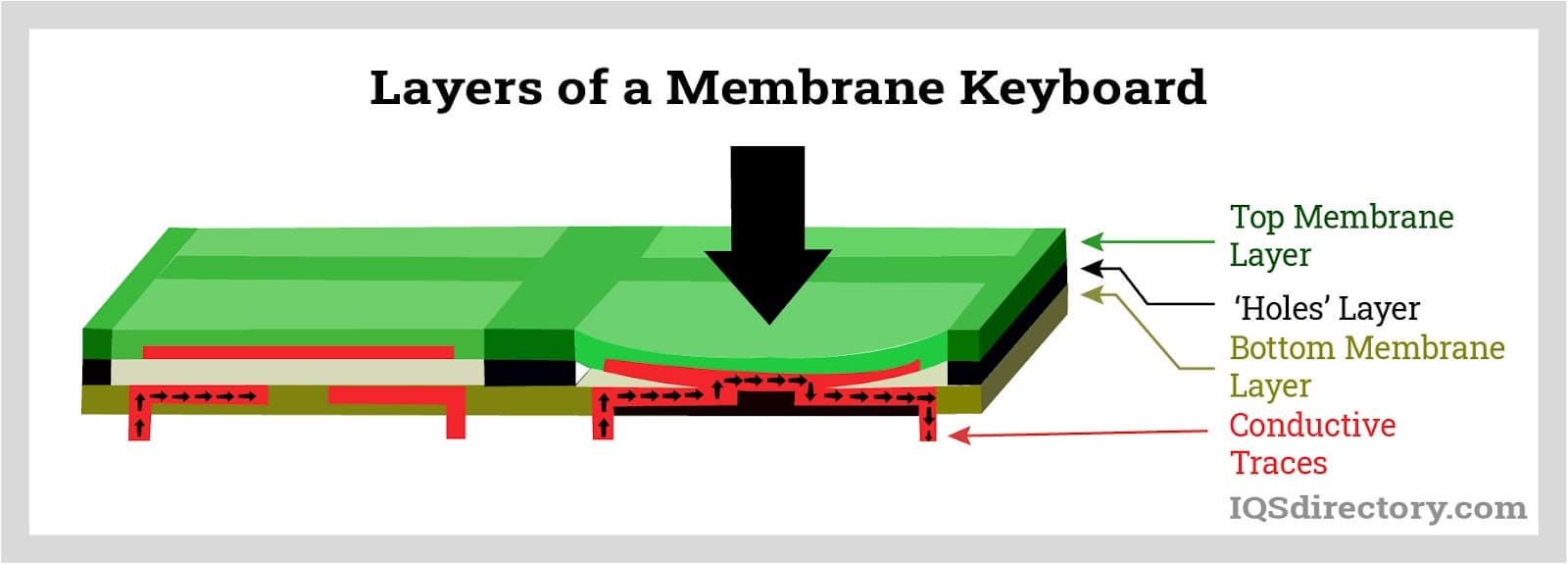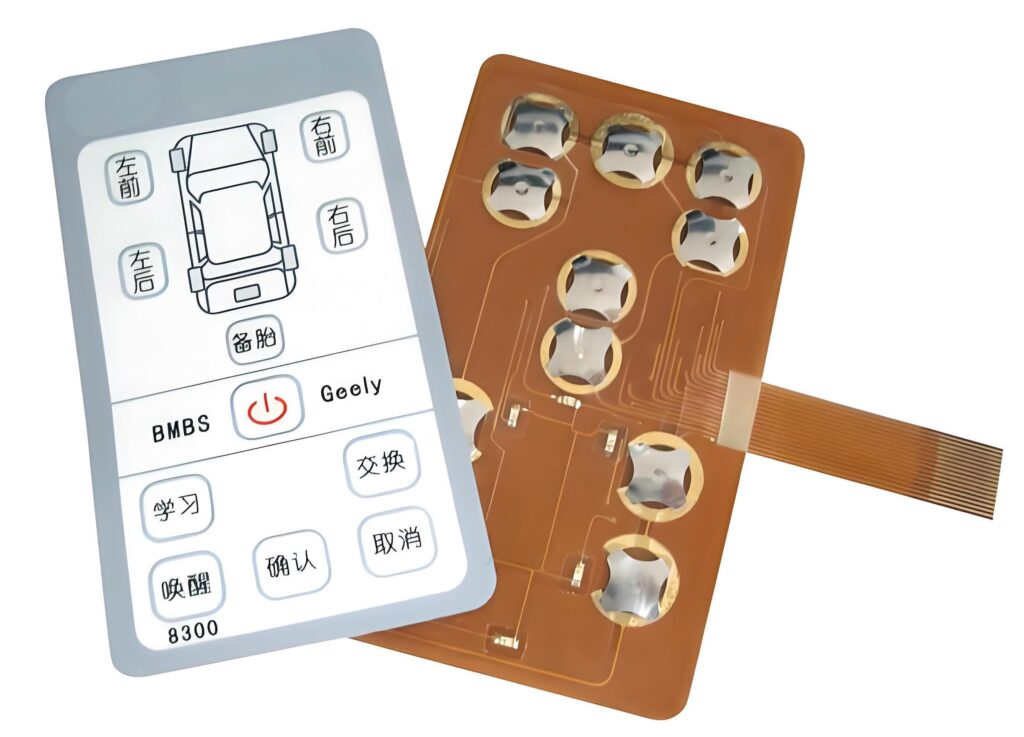What makes membrane switch a popular choice in automotive dashboards?
Comprehending the Relevance of Membrane Change in Modern Electronics
Membrane switches are integral elements in modern-day digital tools. They use a mix of functionality and layout that enhances individual interaction. Their durable and lightweight nature makes them ideal for numerous applications. As markets advance, the demand for personalization and progressed attributes expands. Understanding how membrane layer switches add to innovation reveals their relevance fit the future of electronic devices. What lies ahead for this technology?
The Basics of Membrane Switch Over Innovation
Although typically neglected, membrane button technology plays an important function in the modern electronic devices landscape - membrane switch. These tools, made up of several layers, serve as customer interfaces for various electronic items, varying from home devices to clinical tools. A regular membrane layer button includes a graphic overlay, a spacer layer, and a circuit layer, which are thoroughly put together to create a functional interface.When stress is used to the overlay, the circuit layer is finished, permitting signals to be sent to the tool. This modern technology is known for its adaptability, enabling modification in style, capability, and form to satisfy specific user requirements. In addition, membrane layer switches are slim and light-weight, making them ideal for applications where room is a premium. Their toughness and resistance to ecological aspects further boost their appeal, guaranteeing they can withstand severe problems while preserving functionality. Overall, membrane layer button modern technology is indispensable to developing user-friendly and effective electronic gadgets

Key Advantages of Membrane Layer Changes
Membrane layer changes deal a number of crucial benefits that make them a favored selection in numerous digital applications. Their design enables for a small form factor, enabling makers to develop streamlined and light-weight devices. Furthermore, membrane switches are resistant to dirt, wetness, and chemicals, which boosts their durability and durability sought after environments. The tactile comments supplied by these buttons can enhance individual experience, making them easy and intuitive to operate.Furthermore, membrane layer buttons can be tailored with diverse graphics and shades, enabling for unique branding opportunities. The manufacturing process is generally affordable, particularly for high-volume manufacturing, as it reduces setting up time and streamlines style. Membrane switches need very little maintenance, adding to lower general functional prices. These advantages highlight their growing popularity in contemporary electronic devices, where dependability and user-friendly user interfaces are crucial.

Applications Across Different Industries
The flexibility of membrane changes enables their prevalent fostering throughout different sectors. In the medical area, they are typically made use of in analysis devices and individual surveillance systems, using a durable interface resistant to pollutants. The auto sector makes use of membrane layer switches for control panel controls, improving customer experience with streamlined designs that withstand extreme problems. In consumer electronic devices, they function as control board for gadgets such as microwaves and coffee machine, supplying an user-friendly user interface that is very easy to tidy. The aerospace field uses membrane buttons in cabin controls, where reliability and room efficiency are paramount. Additionally, the industrial industry leverages these switches in equipment and control systems to ensure robust operation sought after settings. This wide range of applications emphasizes the versatility of membrane layer buttons, making them essential parts in enhancing functionality and individual interaction across diverse technological landscapes.
Modification and Layout Adaptability

Future Trends in Membrane Change Advancement
Emerging trends in membrane layer button growth suggest an expanding focus on improved performance and combination with wise innovations. As customer demand for a lot more innovative electronic devices rises, manufacturers are concentrating on developing membrane layer changes that not only serve standard functional roles but additionally include functions like touch sensitivity, backlighting, and haptic feedback.Furthermore, advancements in products are anticipated to improve resilience and ecological resistance, making membrane layer switches ideal for varied applications in industries such as healthcare, automotive, and customer electronics. The integration of capacitive touch technology is likely to come to be much more prevalent, permitting for sleeker styles and improved individual interfaces. membrane switch.Additionally, the rise of the Net of Things (IoT) is motivating the advancement of membrane layer changes that can communicate wirelessly with other tools, enhancing interconnectivity. Generally, the future of membrane button innovation shows up appealing, driven by innovation and the quest of user-friendly options
Frequently Asked Concerns
Exactly How Do Membrane Layer Switches Contrast to Conventional Mechanical Buttons?
Membrane switches, being extra space-efficient and providing a streamlined design, contrast with typical mechanical switches that provide responsive feedback. The previous typically include adjustable graphics, while the latter generally ensure sturdiness and integrity in various applications.
What Products Are Frequently Made Use Of in Membrane Switch Production?
Membrane buttons are usually generated using materials such as polyester, polycarbonate, and printed conductive inks. These products give adaptability, responsiveness, and durability, making them suitable for various applications in electronic gadgets and individual interfaces.
Can Membrane Changes Be Repaired or Reused?
Membrane switches can frequently be repaired, specifically if small problems arise, such as glue failing or surface area damage. However, full reuse is commonly limited due to wear and possible deterioration of materials over time.
Exactly How Do Environmental Factors Influence Membrane Switch Efficiency?
Environmental elements, such as temperature level, exposure, and moisture to chemicals, considerably influence membrane button performance. Extreme problems can cause deterioration, impacting responsiveness and durability, ultimately compromising the performance of the gadget in article numerous applications.
What Is the Normal Lifespan of a Membrane Switch over?
The regular life-span of a membrane button typically ranges from 1 to 5 million actuations, relying on variables such as use regularity, environmental problems, and the materials utilized in production, impacting sturdiness and performance longevity. A regular membrane button is composed of a visuals overlay, a spacer layer, and a circuit layer, which are meticulously constructed to develop a practical interface - membrane switch.When pressure is used to the overlay, the circuit layer is finished, enabling signals to be transmitted to the gadget. The tactile responses supplied by these buttons can boost user experience, making membrane switch them simple and user-friendly to operate.Furthermore, membrane layer switches can be personalized with varied graphics and colors, allowing for special branding opportunities. As consumer need for a lot more innovative electronic tools increases, makers are concentrating on creating membrane switches over that not only offer standard operational roles however likewise incorporate functions like touch level of sensitivity, backlighting, and haptic feedback.Furthermore, advancements in materials are expected to enhance resilience and environmental resistance, making membrane changes appropriate for diverse applications in sectors such as healthcare, automobile, and customer electronic devices. The combination of capacitive touch modern technology is most likely to come to be extra widespread, permitting for sleeker layouts and improved user interfaces.Additionally, the surge of the Web of Points (IoT) is triggering the growth of membrane changes that can communicate wirelessly with various other devices, boosting interconnectivity. Membrane layer buttons, being extra space-efficient and offering a smooth layout, contrast with typical mechanical buttons that supply tactile responses